Click on images to enlarge
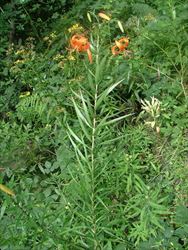
habit (Photo: Sheldon Navie)
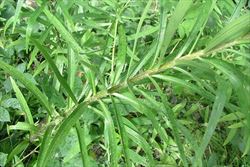
lower leaves (Photo: Sheldon Navie)

hairy stem and purple bulbils in the leaf forks (Photo: Sheldon Navie)
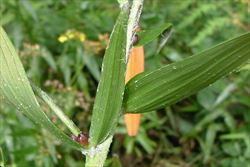
close-up of leaf undersides (Photo: Sheldon Navie)
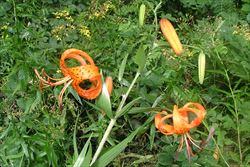
upper leaves and flowers (Photo: Sheldon Navie)

close-up of flower showing style and six prominent stamens (Photo: Sheldon Navie)
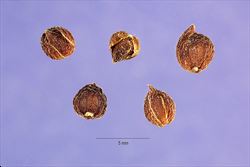
close-up of seeds (Photo: Jose Hernandez at USDA PLANTS Database)
Scientific Name
Lilium lancifolium Thunb.
Synonyms
Lilium tigrinum Ker Gawl.
Family
Liliaceae
Common Names
devil lily, Easter lily, Japanese show lily, kentan, lance-leaf tiger lily, martagon, tiger lily
Origin
Native to eastern Asia (i.e. China, Korea and Japan).
Naturalised Distribution
This species currently has a limited distribution in some parts of south-eastern Australia. It is naturalised in Victoria and sparingly naturalised in the Central Tablelands region in eastern New South Wales.
Also naturalised in other temperate regions of the world (e.g. northern and eastern USA, Canada and New Zealand).
Notes
Tiger lily (Lilium lancifolium) is regarded as an emerging or potential environmental weed in Victoria. It was first recorded as naturalised in Victoria in 1985, where it was reported to be locally abundant in the Dandenong Ranges. This garden escape is also listed as a potential environmental weed species at Falls Creek in north-eastern Victoria, and has been observed growing along roadsides in the Mount Baw Baw National Park in south-eastern Victoria. Tiger lily (Lilium lancifolium) is currently mainly found in cooler highland areas and may be a potential weed of the alpine and sub-alpine regions of south-eastern Australia.
This species is also a widespread but sporadic garden escape in eastern and north-eastern North America, and seems to be naturalised mainly along roadsides in the cooler and wetter regions of this continent. However, there is one very recent report of thousands of tiger lilies (Lilium lancifolium) growing in large patches in natural vegetation on a mountain-top in North Carolina. It is also a weed of roadsides, waste places, cemeteries and bush margins in New Zealand.

